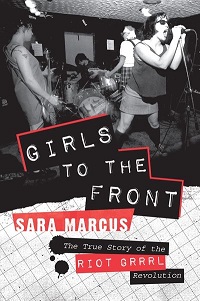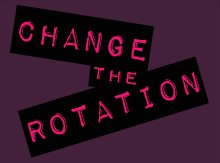Punk Rock Book Club: Sara Marcus' Girls to the Front
Steve O - July 23, 2019

In Sara Marcus’ Girls to the Front: The True Story of the Riot Grrrl Revolution, Marcus lays out the timeline of what reluctantly turned into a mass movement, exploding in the early/mid-Nineties like so many things labeled ‘alternative’ into the consciousness of mass media. The Riot Grrrl story that Marcus tells is largely focused in two places: Olympia, Washington and Washington DC, building upon the DIY networks that already existed in those towns (if you followed my recommendation to read Our Band Could Be Your Life, you’ll know all about it). Like the punk scene in which Riot Grrrl was a part, individuals were drawn in through friendships and that feeling of being out of place in mainstream society. For Riot Grrrl in particular though, that was a mainstream society of sexism, of sexual abuse and harassment, of overwhelming patriarchy. And so they took aim to kick the shit out of this structure.
Girls to the Front follows a whole cast of characters that were involved with Riot Grrrl. In particular it follows early bands such as Bratmoblie and Heavens to Betsy, and of course, Bikini Kill. Kathleen Hanna, by being the front of Riot Grrrl’s most popular band, figures heavily into the story, assuming an unwanted leadership role. But as well as Hanna’s influence in the music scene, she played an important role in the other major facet of Riot Grrrl: activism. Marcus’ narrative here largely follows Hanna’s, especially in the first half of the book, when Bikini Kill and Hanna herself were most involved in Riot Grrrl. Hanna came from a background of feminism, working with domestic violence shelters and rape crisis hotlines and on tour she played up the role of women working together to help each other out. In DC she decided to start working with the activist group Positive Force, establishing the first Riot Grrrl chapter, thereby creating a community of activism that would spread across the country under the banner of Riot Grrrl, with associations popping up all over the place, with DC and Olympia being the strongest. A large part of this growth came with zine culture as well, as Riot Grrrl zines proliferated at an astounding rate. Ironically all of this growth and activism both isolated Hanna from the scene she created and brought on the attention of the mass media, creating schisms throughout the scene.
Marcus’ account continues to track the trajectory of Riot Grrrl throughout the first half of the Nineties, from its highs of a 1992 convention to the onslaught of media attention that essentially broke the scene apart. She veers away from some of the bands, telling the lesser known tales about the activists, and the struggles they encountered along the way, many owing to the differing ambitions of those involved and the variety of opinions in relation to the interests of mass media. Along the way Marcus shares the struggles and successes of those involved, from those in bands to the zine writers to the organizers and activists. It is an insightful look into a scene that was much more than just a couple popular bands. And Marcus makes sure that whole picture is painted, both the positives and the negatives. You probably don’t know the story this deep in detail, and Girls to the Front is a great place to fill in those blanks.
